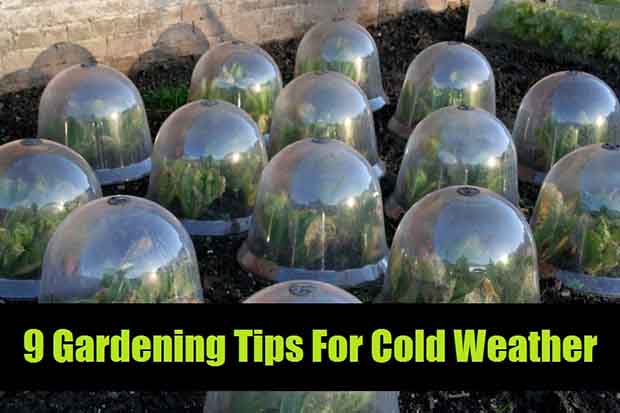How to Winter Garden in Cold Climates

Introduction
As the days grow shorter and the air crisper, many gardeners retreat indoors, believing that the cold weather spells the end of their gardening season. But what if I told you that winter gardening in cold climates can be just as rewarding, if not more so, than gardening in the warmer months? Imagine your garden as a beautiful, dormant canvas waiting to be awakened by your touch. With the right winter gardening tips for cold climates, you can transform your outdoor space into a thriving oasis, even in the harshest conditions.
Understanding Winter Gardening
What is Winter Gardening?
Winter gardening is the practice of cultivating and maintaining plants during the coldest months of the year. It involves selecting hardy plants, providing adequate frost protection, and implementing effective garden maintenance strategies. Unlike summer gardening, winter gardening requires a different mindset and approach, focusing on resilience and adaptability.
Benefits of Winter Gardening
Winter gardening offers numerous benefits. It extends the growing season, allowing you to enjoy fresh produce and vibrant foliage year-round. Additionally, it provides a sense of accomplishment and connection to nature during a time when many people feel disconnected from the outdoors.
Selecting the Right Plants
Hardy Vegetables
When it comes to winter gardening, choosing the right plants is crucial. Hardy vegetables like kale, spinach, and Brussels sprouts thrive in cold weather. These plants are not only resilient but also offer a variety of nutrients and flavors that can enhance your winter meals.
Cold-Tolerant Flowers
Don't let the cold deter you from adding a splash of color to your garden. Cold-tolerant flowers such as pansies, violas, and hellebores can withstand frosty temperatures and add a touch of beauty to your winter landscape.
Frost Protection Techniques
Mulching
Mulching is an essential technique for protecting your plants from frost. A layer of organic mulch, such as straw or wood chips, can insulate the soil and help retain moisture. This protective barrier can make a significant difference in the survival of your plants during the coldest months.
Row Covers
Row covers are another effective method for frost protection. These lightweight fabrics can be draped over your plants to create a mini greenhouse effect, trapping heat and protecting against frost. Row covers are particularly useful for tender vegetables and flowers that need an extra layer of protection.
Garden Maintenance in Winter
Pruning and Deadheading
Winter is an ideal time for pruning and deadheading. Removing dead or damaged branches and flowers not only improves the appearance of your garden but also promotes healthy growth in the spring. Be sure to use sharp, clean tools to prevent the spread of diseases.
Watering Strategies
While watering may seem counterintuitive in the winter, it's crucial for the health of your plants. Watering deeply once a week can help prevent root damage and ensure that your plants have enough moisture to survive the cold. Be mindful of the weather forecast and avoid watering when temperatures are expected to drop below freezing.
Seasonal Gardening Tips
Preparing for Spring
Winter gardening is not just about surviving the cold; it's also about preparing for the spring. Use this time to plan your spring garden, order seeds, and start indoor seedlings. By getting a head start, you'll be ready to hit the ground running when the warmer weather arrives.
Enjoying the Winter Landscape
Don't forget to take a moment to appreciate the unique beauty of your winter garden. The stark contrast of snow against evergreens and the delicate frost patterns on leaves can be breathtaking. Winter gardening is about more than just survival; it's about finding joy in the quieter moments of the year.
Conclusion
Winter gardening in cold climates is a rewarding endeavor that extends the growing season and connects you with nature during the colder months. By selecting the right plants, implementing effective frost protection techniques, and maintaining your garden with care, you can create a thriving oasis even in the harshest conditions. Embrace the challenge and discover the beauty of winter gardening.
FAQs
What are some common mistakes to avoid in winter gardening?
- Overwatering, neglecting frost protection, and choosing non-hardy plants are common mistakes. Be mindful of watering needs, use mulch and row covers for protection, and select plants that thrive in cold weather.
Can I grow herbs in the winter?
- Yes, many herbs like rosemary, thyme, and parsley can tolerate cold weather. They can be grown in pots and brought indoors during extreme cold spells.
How do I protect my potted plants from frost?
- Move potted plants to a sheltered area or indoors during extreme cold. You can also wrap the pots in burlap or insulating material to protect the roots.
What are the best vegetables to grow in the winter?
- Hardy vegetables like kale, spinach, Brussels sprouts, and root vegetables such as carrots and beets are excellent choices for winter gardening.
How can I add color to my winter garden?
- Plant cold-tolerant flowers like pansies, violas, and hellebores. Evergreens and berry-producing shrubs can also add vibrant colors to your winter landscape.


By following these winter gardening tips for cold climates, you can transform your outdoor space into a flourishing haven, even in the depths of winter. Happy gardening!
0 Response to "How to Winter Garden in Cold Climates"
Post a Comment